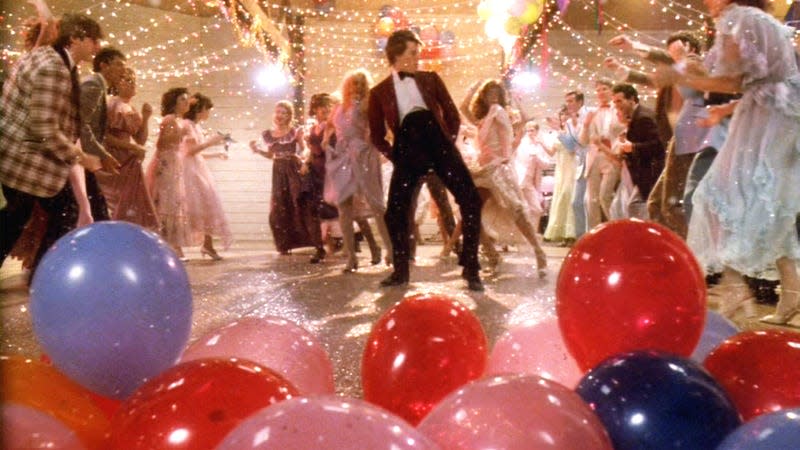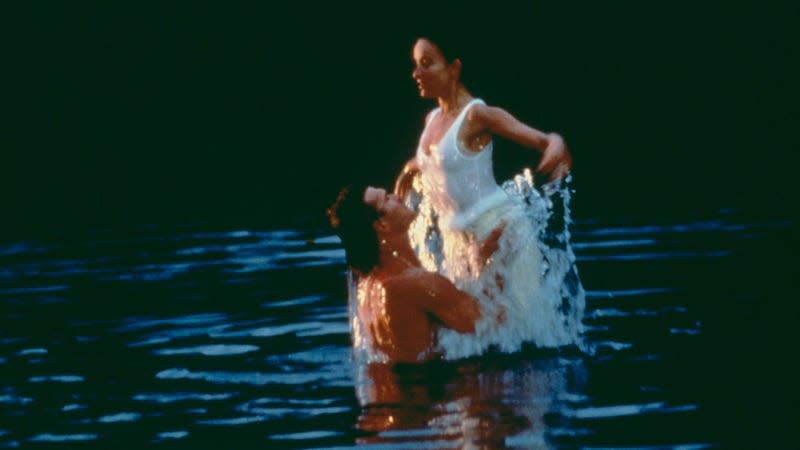Why don’t they make dance movies like Footloose anymore?

- Oops!Something went wrong.Please try again later.
- Oops!Something went wrong.Please try again later.
Dancing never goes out of style, but apparently dance movies do. The 40th anniversary of Footloose has us thinking about all the dance movies we’ve loved through the years, and the scarcity of those kinds of films these days. If you look at social media, especially TikTok, dance is more popular than ever. Dancing With The Stars just wrapped up its 32nd season and So You Think You Can Dance returns for its 18th season next month. The interest is there, but where are the films to meet it?
You may have already figured out that we’re not talking about musicals here. Hollywood still makes those, even if the industry is being weirdly reluctant to advertise them that way lately (even when it comes to a Broadway smash like Wicked). Dance films are a sub-genre all their own. If the characters suddenly burst into song and it’s treated as a totally normal thing to do, it’s not a dance movie, it’s a musical. Singin’ In The Rain has some of the best dance numbers ever put on screen, but those numbers also have singing in them, so it’s a musical. The Red Shoes, on the other hand, now that’s a dance movie.
So what exactly is a dance movie then?
What else characterizes the fading dance movie sub-genre? For one thing, the main characters are often aspiring dancers who struggle with the cost of chasing their dreams, yet choose to chase them anyway for the sake of art and self-expression. Of course, that doesn’t apply to Footloose, the story of a young man who moves to a small conservative town where dancing is forbidden and reminds them all of the joy of kicking up their Sunday shoes. That’s where another key component of the sub-genre comes in—a celebration of dance and the spirit of fun that comes with it. Things like a coherent story or fleshed out characters aren’t necessary, just some slick moves, catchy tunes, and the desire to put on a show. Sometimes that’s all you need to change hearts and minds.
This criteria may seem arbitrary, but there’s an important distinction between dance movies and movies that merely have dancing in them. Though they’re based in the world of dance (specifically ballet), films like Suspiria (both Dario Argento’s original and Luca Guadagnino’s remake) and Black Swan share more in common tonally with horror and psychological thrillers. And we’d also exclude dramas like Silver Linings Playbook or Frances Ha; in those films, the dancing is secondary to the storytelling. The plot is more than just filler to get us from one musical set piece to the next. They may challenge the audience or engage the mind. That’s not why we watch dance movies, though.
The beat goes on, until it doesn’t
While you don’t have to look too hard to find the kinds of movies mentioned above, dance movies are much harder to come by. They definitely aren’t as popular as they used to be. What was the last big, fun dance movie you saw in a theater? Magic Mike XXL? Last year even that franchise went out with a whimper after Magic Mike’s Last Dance fell flat with audiences and critics alike. Would we even have Magic Mike without Channing Tatum’s breakout role in 2006’s Step Up?
For decades the genre fed into itself and kept the cycle going. The disco-powered spectacles of the 1970s like Saturday Night Fever, Thank God It’s Friday, and Roller Boogie paved the way for the gritty edginess of movies like Fame and Flashdance in the 1980s. There were also attempts to capitalize on the popularity of break dancing, which in 1984 was just emerging as a new form of dance, in films like Breakin’ and its sequel, Breaking’ 2: Electric Boogaloo, released just a few months later. And then there was Footloose, which became a crossover sensation thanks to its anthemic soundtrack and Bacon’s boy-next-door appeal. The ’80s also brought us the cheesy forgotten gem Girls Just Want To Have Fun, starring young Helen Hunt and Sarah Jessica Parker, and the timeless classic Dirty Dancing.

Not every dance film has enjoyed the contemporary success of Footloose or Dirty Dancing, and even those weren’t universally accepted as critical successes when they first came out. It often takes years or even decades for the culture to come around and appreciate these movies on their own terms. Which is ironic, given how many of them are based on mass appeal and tend to chase the cultural trends of their time. Swing Kids, for instance, came along at the height of the 1990s swing revival, and though we wouldn’t categorize it as a dance movie, Swingers helped push it into the mainstream. The decade also brought us Baz Luhrmann’s Strictly Ballroom, which pushed the format into the realm of legitimate, quality filmmaking.
The dance movies of the new millennium took us backstage with ballet-inspired releases like Center Stage, The Company, and Billy Elliot, and into battle with the high-octane competitions in You Got Served, Take The Lead, and Stomp The Yard. Thomas Carter, who previously directed Swing Kids, merged the two worlds in Save The Last Dance. But as the 2000s came to a close, things had started to cool off. By the time Paramount and MTV films got around to remaking Footloose in 2011, the box office numbers weren’t there to justify its existence (nevermind the question of whether a remake was even a good idea).
It’s time for a renaissance
For the last two decades dance movies have been in a creative slump. There’s been a series of sequels to Step Up and other hits of the past, but none have managed to break through into the mainstream consciousness in the same way as the original. Dance is a living, breathing art form always in perpetual motion. Like fashion, it’s cyclical. Its trends are short lasting and can quickly become outdated, but with time and a little distance it becomes a part of history. Today’s films may not be able to replicate the feeling of watching Footloose again for the first time 40 years later (they literally already tried that), but there’s a template there that works. That’s why the formula has been repeated so many times. Take a scrappy underdog yearning to express themselves through music and dance, add in a love interest or two, give them an obstacle to overcome, and build up to a thrilling, climactic musical number that encapsulates that struggle. Cut loose and give us something to cheer for, Hollywood. You’ll be dancing all the way to the bank.

